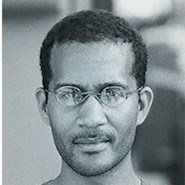
Racial protests this year have highlighted persistent income and wealth gaps between white Americans and racial minorities. Unequal access to the kinds of education and training that can lead to better jobs — including in science, technology, engineering, and mathematics — is an issue that holds back many.
But a study released this year by a team of University of Washington researchers, led by biology teachers Elli J. Theobald, Ph.D., and Scott Freeman, Ph.D., concluded that the practice of “active learning” can reduce the achievement gaps seen between students in the majority and those from underrepresented groups in undergraduate STEM educations.
The report, “Active Learning Narrows Achievement Gaps for Underrepresented Students in Undergraduate Science, Technology, Engineering, and Math,” was published in the Proceedings of the National Academy of Sciences. The researchers analyzed 9,238 student examinations from 15 studies across the country and data on student failure rates from 26 studies covering 44,606 total students. The report found that on average, hands-on learning methods reduced the gaps in exam scores by 33 percent and narrowed gaps in pass rates by 45 percent for low-income and racially underrepresented groups, including Black, Latino, Native American, Native Hawaiian, and Pacific Islander students. More intensive classes in which students spend two-thirds of their course time in active learning narrow the gap in test scores and pass rates even further, by, respectively, 42 percent and 76 percent.
According to 2017 data from the Economic Policy Institute, the median income for Black men is 30 percent lower than the median income for white men, and the gap between Black women and white women is 21 percent. In STEM fields, the gap is smaller but still there. According to the National Science Foundation, in 2010, engineers’ median annual salary was $87,000. The median salary for whites was $89,000; for Blacks it was $78,000, a difference of 14.1 percent. This is potentially significant, given the importance of education in closing income gaps between whites and racial minorities.
Underrepresentation in STEM fields is “primarily due to attrition” during college, according to the report. Minority students begin college with the same levels of interest in STEM fields as their overrepresented peers, but the six-year STEM degree completion rate drops from 52 percent for Asian Americans and 43 percent for whites to 29 percent for Latinos, 25 percent for Native Americans, and 22 percent for African Americans, the report concludes. Disparities also exist for lower-income students versus higher-income students.
Getting active
So what is active learning? Freeman, a professor emeritus in biology at UW, defines it as a group of techniques that engage students dynamically in the process of learning. Rather than sitting back and passively receiving lectures, students participate in group work that develops high-level problem-solving skills.
According to the report, to be considered “active learning,” a curriculum must:
* Stress the importance of deliberate and focused practice.
* Use “scaffolded exercises” that address specific skills.
* Provide feedback and repetition.
* Offer an inclusive approach that emphasizes “treating students with dignity and respect” and a faith in students’ capacity to excel.
This goes against the traditional model of university education, says Freeman, in which “domain experts” lecture to students, who are treated as simply empty vessels for that knowledge to be poured into. Recent research in cognitive psychology has upended this view.
“Students have mental models of how the world works, whether it’s engineering or basic physics, and your job as an instructor is to understand what those are and understand what’s wrong with them,” says Freeman.
In other words, it is the job of professors to help students improve their own mental capacity for learning — turning students into participants in the absorption and organization of knowledge. This is a process sometimes called having a growth mindset — a belief that one can change how one learns and understand difficult topics. And the first people to adopt that growth mindset must be the professors.
“Small(er) gaps are associated with faculty who have a growth or challenge mindset, which emphasizes the expandability of intelligence and is inclusion-oriented, while larger gaps are correlated with faculty who have a fixed mindset, which interprets intelligence as innate and immutable and is therefore exclusion or selection-oriented,” Freeman says.
“The analogy I use is when somebody with talent and motivation in music or athletics, for example, finally gets a good coach or a good music teacher. Because of their upbringing or their neighborhood, (some underrepresented students) never had a decent basketball coach or soccer coach or gymnastics coach. And then they get into a program where they have one, and it’s like: Bam! They just take off!”
Heads and hearts together
The techniques above are one part of what the researchers dub a “heads-and-hearts” strategy. The hearts side of the equation has to do with making underrepresented students feel welcome and valued. Traditionally STEM classes have been dominated by white and male students; women, Black students, and other minorities can feel like they do not belong when they first walk into a classroom.
“When students feel excluded, their participation is diminished and their academic performance suffers,” says Benjamin Flores, Ph.D., a professor of electrical and computer engineering at the University of Texas at El Paso. “Honestly, who would want to be in a room with peers and instructors that work around them (rather than with them)? This is not only true for students of color but also for other groups like women in the physical science and engineering disciplines.”
Active learning is not about watering down challenging curriculum but reframing the way courses are taught to encourage students to rise to meet those challenges. “The whole idea is that the instructor is creating this culture. We’re telling these students this is really rigorous,” says Freeman. “We’re telling them: ‘This is going to be the hardest course you’ve ever taken, but you can do it. And I’m here to do everything I can to help you. And you’ve got a team all around you.’ It’s creating a sense of belonging.”
Teaching the teachers
“In general, STEM faculty have become more aware of the importance of engaging students in class,” Flores adds. “Department chairs and college deans have adopted language that promotes student success. Also, junior faculty benefit from faculty development programs that aim at preparing them to create engaging classroom environments. This is a major shift that has taken root across higher education.”
Still, this transition will not happen overnight; many young faculty members have much more experience as experts in their fields than they do at teaching their expertise. Additionally, “while STEM faculty may be well-versed in active learning methodologies, they may not be fully aware of the need for creating and maintaining inclusive environments,” Flores says.
And the COVID-19 pandemic has complicated the picture, of course — teachers at all levels are trying to figure out how best to create active, inclusive learning environments remotely.
This research, Freeman contends, points the way for universities to do more than simply make statements about diversity or hire staff to work on the issue of diversity. “The literature shows that each and every faculty member can do something right now that will make a difference,” he says. “We need to change the way we teach, and we can do that right now.
“It’s not a committee. It’s not some statement on a website. It’s actual action.”



